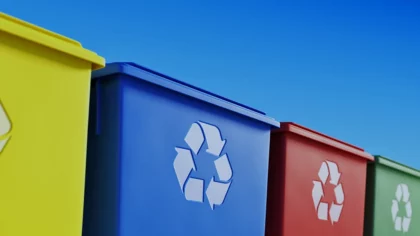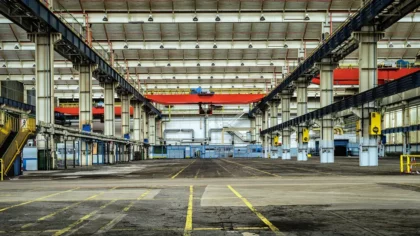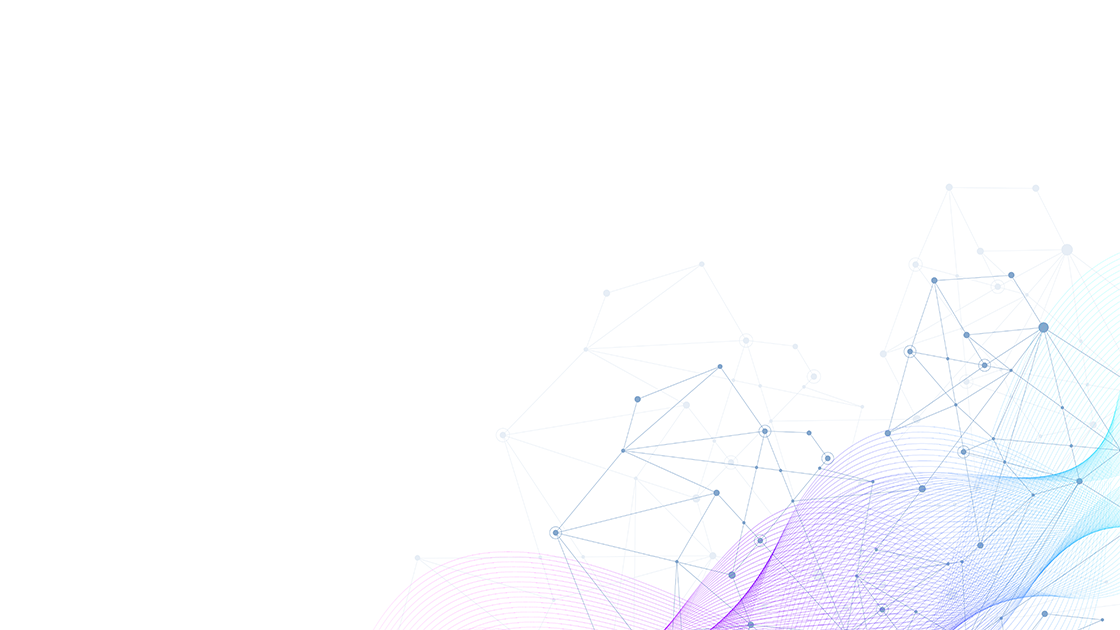The circular economy is gaining momentum as industries seek more responsible ways to manage resources. Driven by rising environmental concerns and the push for regulatory compliance, companies are adopting solutions that extend product lifecycles and reduce waste.
This transition is driving market growth, with the global circular economy market expected to reach USD 517.79 billion in 2025 and USD 798.3 billion in 2029 at a compound annual growth rate (CAGR) of 11.4%. This report explores the top 10 circular economy trends, key market statistics, and 20 innovative startups driving this shift.
What are the Top 10 Circular Economy Trends in 2025?
- Internet of Waste & Artificial Intelligence (AI) Integration
- Plastic Recycling
- Circular Design
- Bio-based Materials
- Zero Waste Strategies
- Refurbishing & Remanufacturing
- E-Waste Recycling
- Upcycling
- Digital Product Passports (DPPs)
- Reusable Packaging
Methodology: How We Created the Circular Economy Trend Report
For our trend reports, we leverage our proprietary StartUs Insights Discovery Platform, covering 7M+ global startups, 20K technologies & trends, plus 150M+ patents, news articles, and market reports.
Creating a report involves approximately 40 hours of analysis. We evaluate our own startup data and complement these insights with external research, including industry reports, news articles, and market analyses. This process enables us to identify the most impactful and innovative trends in the circular economy.
For each trend, we select two exemplary startups that meet the following criteria:
- Relevance: Their product, technology, or solution aligns with the trend.
- Founding Year: Established between 2020 and 2025.
- Company Size: A maximum of 200 employees.
- Location: Specific geographic considerations.
This approach ensures our reports provide reliable, actionable insights into the circular economy innovation ecosystem while highlighting startups driving technological advancements in the industry.
Innovation Map outlines the Top 10 Circular Economy Trends & 20 Promising Startups
For this in-depth research on the Top Circular Economy Trends & Startups, we analyzed a sample of 2298 global startups & scaleups. The Circular Economy Innovation Map created from this data-driven research helps you improve strategic decision-making by giving you a comprehensive overview of the circular economy trends & startups that impact your company.
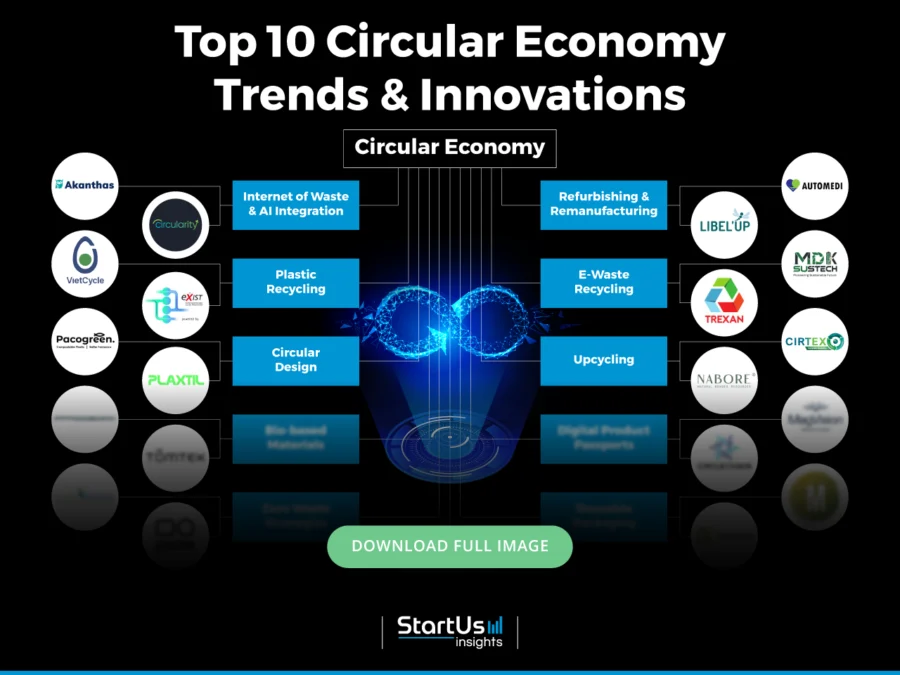
Tree Map reveals the Impact of the Top 10 Trends in Circular Economy
The Circular Economy Tree Map showcases the top trends shaping the sector in 2025. This includes smart waste systems, AI-powered waste tracking, and enzymatic plastic recycling. The map also highlights compostable packaging, digital product passports, and platforms for refurbishing and upcycling. These trends are also driving zero-waste strategies and a regenerative economy.
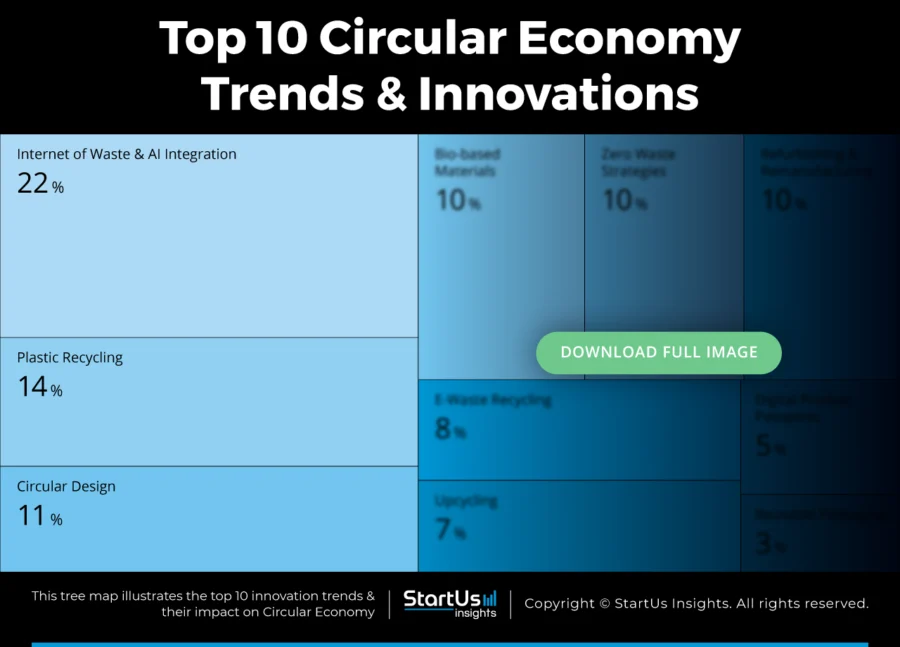
Global Startup Heat Map covers 2298 Circular Economy Startups & Scaleups
The Global Startup Heat Map showcases the distribution of 2298 exemplary startups and scaleups analyzed using the StartUs Insights Discovery Platform. It highlights high startup activity in the US and the UK, followed by France and Germany. From these, 20 promising startups are featured below, selected based on factors like founding year, location, and funding.

Want to Explore Circular Economy Innovations & Trends?
Top 10 Emerging Circular Economy Trends [2025 and Beyond]
1. Internet of Waste & AI Integration
Cities use Internet of Things (IoT) devices equipped with sensors to track real-time waste levels in bins. These devices enable the scheduling and optimization of waste collection routes. In Copenhagen, this system is reducing operational costs by 20% and carbon emissions.
One such solution is Ecube Labs’ CleanCUBE. It is a solar-powered compactor that measures fill levels and compresses waste automatically.
Further, AI-powered systems accurately identify and sort waste materials in processing facilities. This improves recycling rates and reduces landfill dependency. For instance, AMP uses Smart Sortation, an AI-driven automation system, to detect and separate different recyclables.
AI-driven recycling analytics platforms also track waste generation patterns and assess recycling processes. These platforms reveal inefficiencies and predict material recovery value, which allows operators to make data-driven decisions.
Moreover, AI and IoT-equipped waste collection trucks optimize collection routes and schedules using real-time data. An example of this is Oshkosh Corporation‘s McNeilus Volterra ZFL. It is an all-electric front-loader garbage truck that uses an AI-powered system to detect refuse bins.
Further, computer vision-based recycling systems use AI to inspect waste on conveyor belts. These systems detect shape, color, labels, and contaminants. For example, Recycleye has deployed AI-powered vision systems across the UK to identify over waste types with maximum accuracy.
Presently, the digital circular economy market size is expected to grow from USD 3.72 billion in 2025 to USD 9.99 billion in 2029 at a compound annual growth rate of 28.0%. This market includes IoT and AI, which enable resource optimization, waste reduction, and real-time data-driven decision-making.
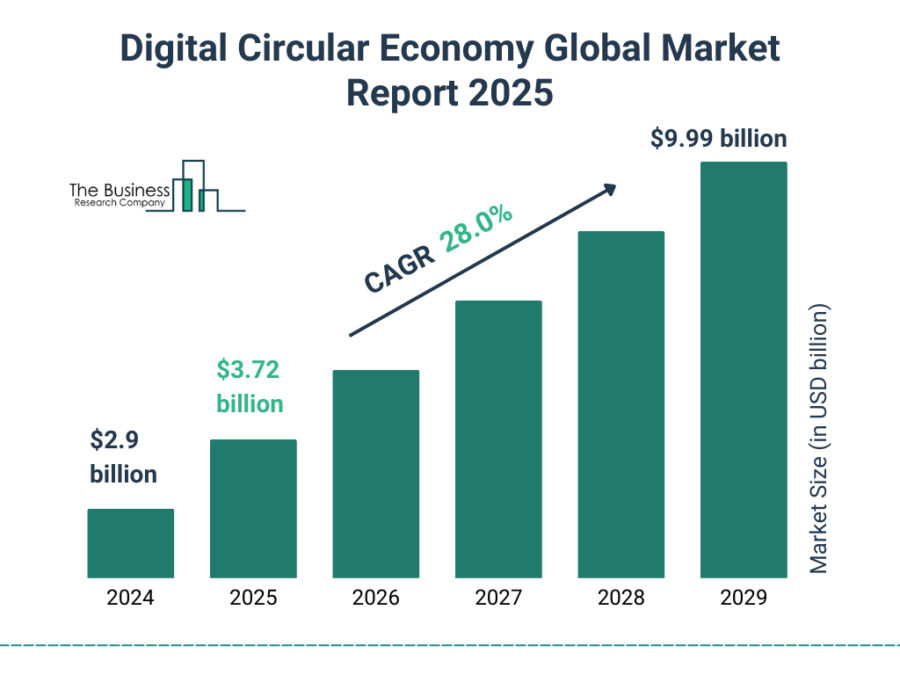
Source: The Business Research Company
Akanthas improves Waste Monitoring and Management
French startup Akanthas develops an AI-powered digital solution that analyzes and monitors waste containers in real time.
The company installs intelligent image sensors above waste containers to capture images. The digital solution then analyzes the images to detect fill levels and sorting errors.
It provides precise information on waste streams and volumes. This enables businesses to plan collections based on real-time container fill levels, weight, and quality.
Additionally, the solution monitors sorting behaviors and enables proactive customer engagement through targeted awareness and training actions.
To ensure privacy, the system automatically masks assets and individuals while complying with data protection regulations.
Circularity Space builds Smart Waste Management Systems
Kenyan startup Circularity Space offers hardware solutions that monitor and optimize resource usage in real time.
Its technology combines AI and IoT to collect and analyze data on resource consumption and provides actionable insights for businesses to improve sustainability.
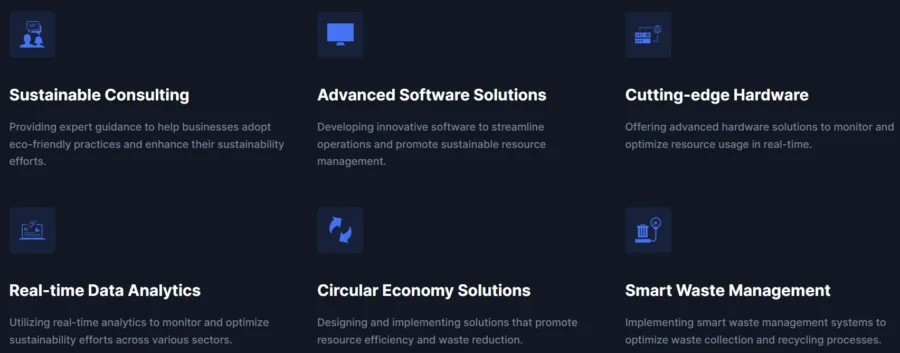
Moreover, the startup’s smart waste management systems also monitor waste levels in real-time for efficient collection planning and resource allocation.
2. Plastic Recycling
The International Union for Conservation of Nature and Natural Resources (IUCN) reports that industries produce over 460 million metric tons of plastic each year.
In addition, an estimated 20 million metric tons of plastic litter enter the environment annually, which is expected to rise by 2040. At the same time, reprocessing plastic waste reduces the demand for virgin plastic production.
Recycling also conserves finite resources by reintroducing materials into the production cycle. This reduces the need for raw material extraction and supports sustainability. For instance, Unilever plans to use 25% recycled plastic in its packaging by 2025.
Recycling programs keep plastic waste out of landfills and oceans. For instance, Ireland’s Deposit Return Scheme recovered over 900 million plastic bottles and cans. This initiative is reducing litter and encouraging cleaner communities.
Showcasing these innovations, the plastic recycling market size is projected to grow from USD 48.59 billion in 2025 to USD 67.58 billion in 2029 at a CAGR of 8.6%.
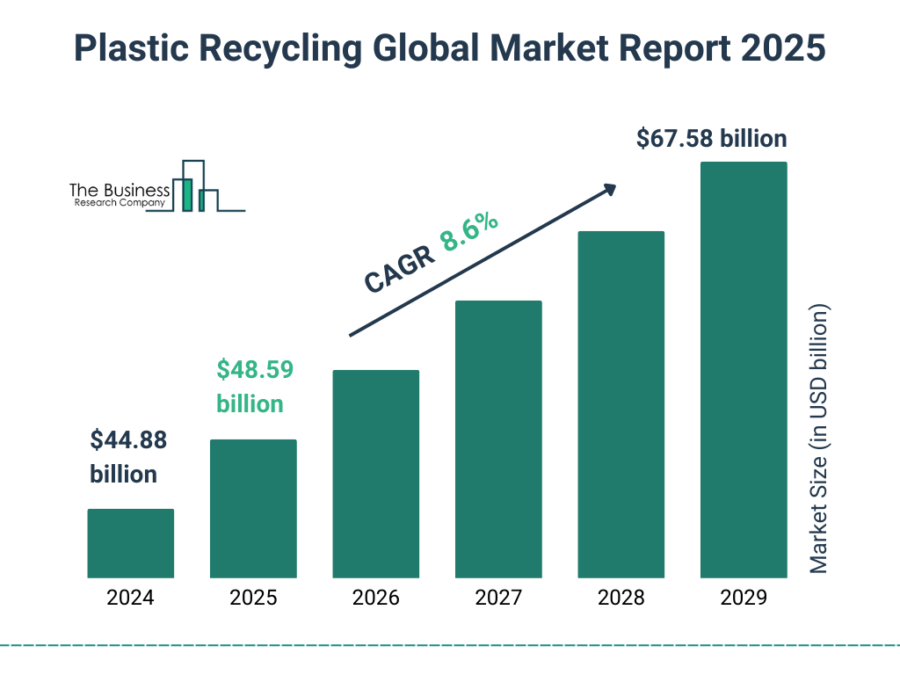
Source: The Business Research Company
Chemical recycling through pyrolysis converts plastic waste into valuable chemicals or fuels by thermally decomposing it without oxygen. A notable case is ExxonMobil, which has invested USD 200 million to expand its Texas facilities. Through its Exxtend program, the company processes up to GBP 1 billion of plastic waste annually using pyrolysis techniques.
Further, photocatalytic recycling uses light-activated catalysts to break down plastics into smaller molecules or fuels. Scientists at Northwestern University used ambient air and a molybdenum catalyst to decompose 94% of PET plastic in four hours. They then converted the plastic into valuable terephthalic acid.
Plastic-to-fuel conversion technology also converts plastic waste into usable fuels through processes like pyrolysis. Mexican startup Petgas developed a machine that converts plastic waste into gasoline and diesel. The machine processes 1.5 tons of plastic and produces 1350 liters of fuel each week.
Enzymatic recycling uses specialized enzymes to break down plastics into monomers. This method enables infinite recycling without degrading quality. Additionally, reverse vending machines (RVMs) accept used beverage containers and reward users to encourage recycling.
VietCycle creates Recycled Plastic Granules & Oils
Vietnamese startup VietCycle converts plastic waste into high-quality recycled products and renewable fuels.
It operates a closed-loop system that collects, sorts, and recycles plastic waste. This closed-loop system also converts low-value plastics into valuable resources.
The startup’s products include CycleResin and CycleFuel. CycleResin is a food-grade recycled resin suitable for food packaging and personal care products manufacturing and CycleFuel is a fuel oil derived from low-value plastic waste.
ESTER Biotech specializes in Enzymatic Hydrolysis
German startup ESTER Biotech provides an enzymatic recycling technology. It breaks down plastics into their original building blocks.
The technology depolymerizes various polyester types like polyethylene terephthalate (PET), polylactic acid (PLA), polybutylene succinate (PBS), polybutylene adipate terephthalate (PBAT), and thermoplastic starch (TPS).
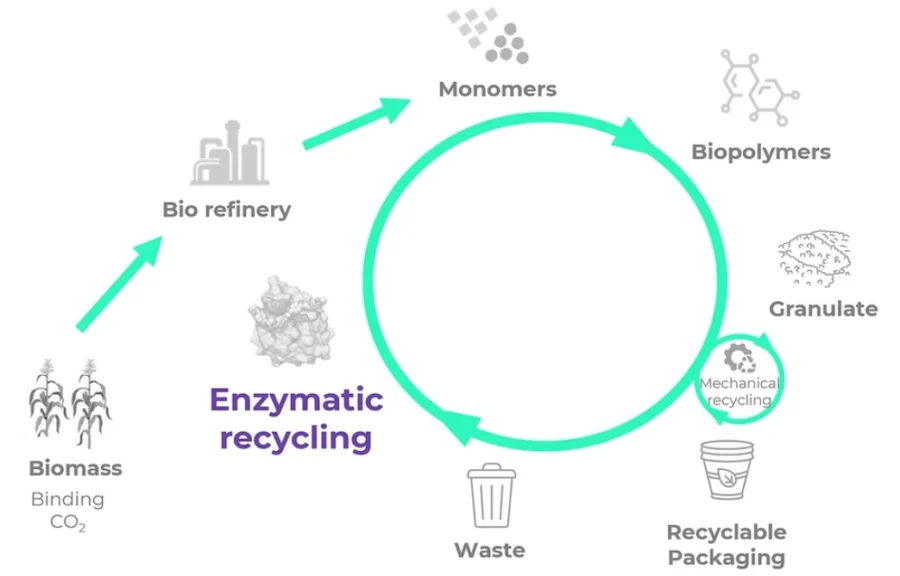
Moreover, the startup integrates AI-driven modeling and machine learning to improve enzyme development and optimization accuracy.
The startup operates a patented plastics degradation screening platform. It uses electrical impedance spectrography to track structural changes in real time. This ensures high sensitivity, live measurement, and data regardless of material color or layering. The platform also automates data collection and enables precise analysis of degradation processes using small quantities of original materials.
3. Circular Design
Designing products to be reusable, recyclable, or biodegradable enables businesses to minimize waste generation from the outset. This reduces pollution and conserves natural resources.
Moreover, circular economy businesses design products for durability and reparability to keep them functional longer. This reduces the need for frequent replacements and also lowers material consumption.
For example, Cisco mandates that businesses must design new products and packaging that score at least 75% in their circular design evaluation.
Product-as-a-service (PaaS) is also a business model that allows customers to pay to use a product rather than owning it. This model encourages businesses to design durable, reusable products and take accountability for the entire lifecycle.
The French sporting goods retailer, Decathlon, is offering product rental options in multiple markets. This initiative allows customers to rent sports equipment instead of purchasing. Decathlon’s approach reduces overconsumption and makes sports more accessible and affordable, especially for short-term or occasional buyers.
Moreover, businesses integrate biodegradable materials that naturally decompose and reduce long-term waste. The French government enforced bans on certain single-use plastics through its anti-waste and circular economy law. It promotes the use of biodegradable alternatives.
Digital product passports also store detailed information about a product’s materials, origin, and lifecycle to facilitate material recycling and reuse. For instance, companies like Tesla and Audi are developing battery passports. These digital records track the lifecycle of electric vehicle (EV) batteries to detail material sources, manufacturing processes, and recycling options.
Pacogreen manufactures Compostable Bio-based Packaging
Indian startup Pacogreen offers compostable solutions that replace single-use plastics. Its products are made from cornstarch and other starches that break down quickly.
The startup’s product range includes compostable garbage bags, grocery bags, carry bags, courier and mailer bags, and dog poop bags. It also offers compostable films and wraps, fruit and vegetable bags, granules, and water bottles.
Pacogreen utilizes a proprietary process, Calculate, Understand, Pacogreen (C.U.P), that allows businesses to transition to compostable plastics by calculating their current plastic usage and understanding specific needs.
Additionally, Pacogreen uses data-driven insights through predictive analytics to optimize inventory, shelf life, and delivery times.
PLAXTIL provides Regenerated Waste-based Polymers
French startup PLAXTIL develops ecological polymers regenerated from textile and plastic waste. It uses a recycling process that converts waste materials into high-quality polymers for use in manufacturing new products.
The startup primarily targets textile manufacturers, offering eco-design solutions for their future products. This enables them to integrate circularity into their production processes.
In addition to textiles, PLAXTIL provides industries with an environmentally friendly alternative to plastic parts to support the transition to a circular economy.
4. Bio-based Materials
Bio-based materials, derived from renewable resources, result in lower carbon emissions than synthetic materials.
The European Commission’s Joint Research Centre analyzed 98 emerging bio-based products. The study found bio-based materials emit 45% less greenhouse gases on average over their life cycles than similar fossil-based products.
Businesses also use agricultural byproducts to create valuable materials, minimize waste, and improve resource efficiency. PaperWise, for example, utilizes agricultural residues, like crop stalks and leaves, to manufacture sustainable paper and board products. This method reduces reliance on virgin materials.
Additionally, many bio-based materials biodegrade under appropriate conditions, which reduces environmental pollution. One such example is mycelium-based packaging. It decomposes within weeks and offers an eco-friendly alternative to traditional plastics.
The bio-based materials market size is estimated to grow from USD 47.97 billion in 2025 to USD 106.69 billion in 2029 at a CAGR of 22.1%.
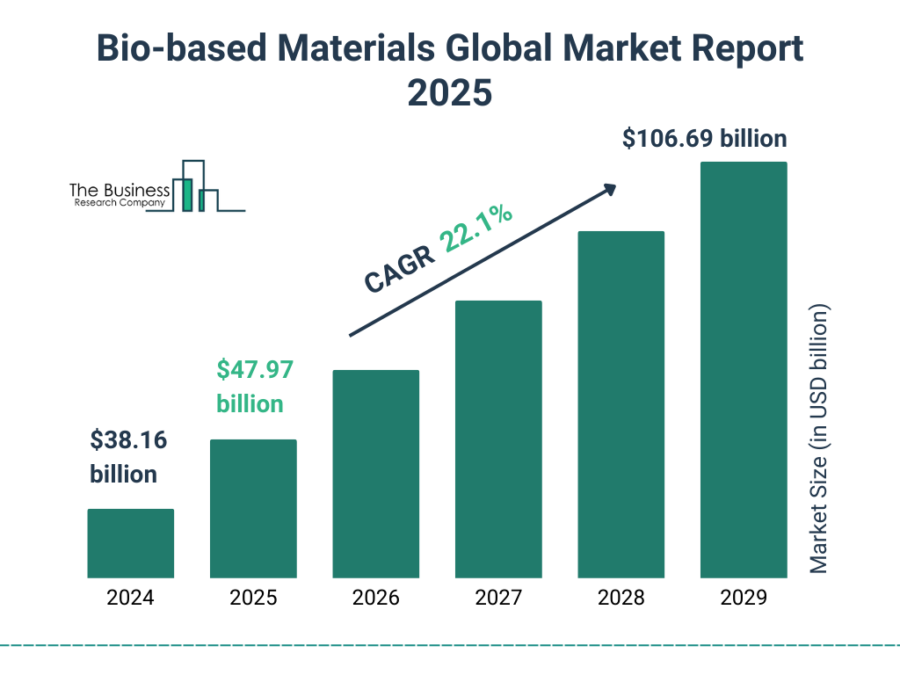
Source: The Business Research Company
Manufacturers also produce bioplastics from renewable resources like corn, seaweed, and sugarcane. Companies such as Shellworks and Sway produce bioplastics with a smaller carbon footprint and better biodegradability.
Converting agricultural by-products into textile fibers reduces waste and lessens reliance on virgin materials. Spinnova, a Finnish company, has a patented technology to produce textile fiber from wood pulp and waste without harmful chemicals.
Further, manufacturers combine natural fibers with bio-derived resins to produce bio-based composites. These materials offer sustainable alternatives for industries like automotive, construction, and consumer goods.
Chemical recycling solutions convert polyurethane waste into valuable resources like glycolysis, pyrolysis, and more. The Footwear Technology Center of La Rioja (CTCR) is making a process that converts polyurethane waste into biopolyols for sustainable production.
Pack2earth offers Compostable Packaging
Spanish startup Pack2Earth develops bio-based materials that provide sustainable alternatives to petroleum plastics in packaging. Its products include flexible films and injection molding materials.
The high-barrier, home-compostable materials are made from plant matter and minerals. They decompose at ambient temperature without leaving harmful microplastics.
Moreover, the flexible films are suitable for sachets, pouches, and other packaging applications.
The injection molding materials are ideal for manufacturing items like caps and cups, which are reusable up to 200 times. These materials are disposable with organic waste or compostable at home.
TOMTEX manufactures Sustainable Fashion Materials
US-based startup TOMTEX creates bio-based materials by using chitosan. The startup sources chitosan from shrimp and crab shells for its Series WS, derived from seafood waste. It also sources chitosan from mushrooms for its Series M, formulated for vegan-friendly materials.
Moreover, Series M is a petrochemical-free, polyurethane, PVC-free, and bio-based product. Hence, it is a sustainable alternative to leather. Further, Series WS sources materials from seafood industry waste. This prevents valuable materials from being landfilled.
5. Zero Waste Strategies
The United Nations Environment Programme (UNEP) warns that the world is heading toward a temperature rise of 2.6 to 3.1 degrees Celsius this century. Moreover, countries must reduce greenhouse gas emissions by over 40% by 2030 to meet the Paris Agreement targets.
A major part of meeting this goal is managing waste, landfills, and incineration that release methane and carbon dioxide. Zero-waste strategies reduce these emissions by keeping materials in use and eliminating waste at the source.
Moreover, businesses must adopt zero-waste strategies as biodiversity continues to shrink. A recent study identifies pollution and habitat change as the main drivers, with reptiles, amphibians, and mammals most affected. Human activity is reducing species numbers by nearly 20% at impacted sites worldwide.
Closed-loop manufacturing, product redesign, and composting organic waste eliminate waste and pollution at the design stage. Implementing such strategies prevents harmful outputs, including byproducts and emissions that negatively impact the environment and human health.
Sydney partnered with the startup Goterra to process food waste using black soldier fly larvae. This method diverts food waste from landfills and converts it into valuable resources like fertilizer and animal feed.
Enzymatic recycling uses enzymes to break down plastics into reusable components. Australian company Samsara Eco is developing a process that enables companies to infinitely recycle plastics like polyester and nylon.
Additionally, chemical recycling breaks plastics into their molecular components for reuse. Scientists at Northwestern University are developing a method that uses ambient air and a molybdenum catalyst to break down polyethylene terephthalate (PET) into terephthalic acid (TPA).
Waste-to-fuel technologies further convert non-recyclable waste materials into usable fuels. Mexican startup Petgas has a machine that changes plastic waste into gasoline and diesel through pyrolysis. It processes 1.5 tonnes of plastic to produce 1350 liters of fuel weekly.
Moreover, AI-enabled waste sorting systems improve material recovery and support a circular economy. These systems accurately identify and separate recyclables for reuse in new products.
Further, the component-level electronics recycling focuses on reclaiming valuable materials from electronic waste. The virtual mines project employs deep learning models to identify and extract components from printed circuit boards. This, in turn, facilitates efficient e-waste recycling.
EnviroMedical improves Material Recovery and Reuse
Irish startup EnviroMedical develops zero-waste strategies within the healthcare sector. The startup offers a range of medical products, including adjustable compression wraps, post-surgical compression garments, compression clothing, and wasteless sterile systems.
The wasteless sterilization systems eliminate the need for traditional polypropylene wraps. This reduces environmental impact due to the surgical and sterilization departments.
Paze provides Zero-Waste Shipping Solutions
German startup Paze offers Aero-Flex, its patented technology that uses air to create flexible and rigid packaging. This technology securely stabilizes products and ensures protection during transit without relying on traditional materials.
The startup offers three solutions – Paze Pro, Paze Lite, and Paze Swift. Paze Pro is a premium option for high-end retail and rental businesses. Paze Lite is a simplified version of the technology. Paze Swift is another affordable solution for small and low-priced products.
Moreover, Paze’s dynamic labeling and automated inflatable packaging solutions streamline operations. This also reduces waste and environmental impact.

6. Refurbishing & Remanufacturing
Refurbishing and remanufacturing processes restore used products to like-new condition. They also reduce the demand for virgin materials, like metals, plastics, glass, and rare earth elements, conserving natural resources and minimizing environmental impact.
These approaches also consume less energy compared to manufacturing new products. For instance, remanufacturing saves up to 85% of the energy required for production.
As per Infiniti Research, the industrial machinery remanufacturing market size is projected to reach USD 895.8 billion at a CAGR of 25.5% by 2029.
Industrial Machinery Remanufacturing Market Outlook
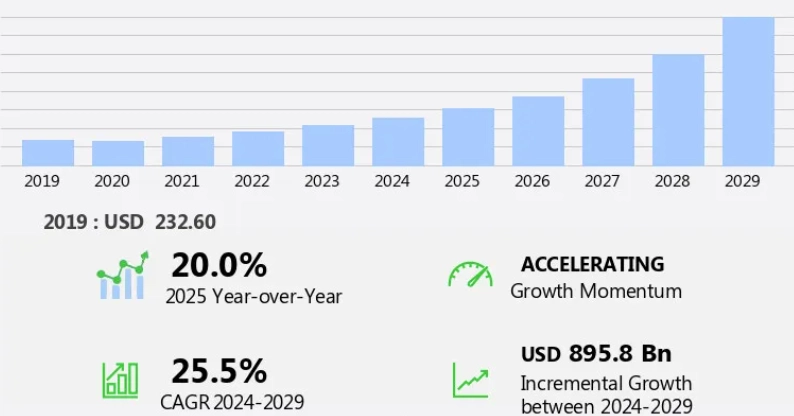
Source: Infiniti Research
Technologies are also streamlining remanufacturing workflows. 3D printing, for example, enables precise reconstruction of worn or missing parts, especially in industrial machinery. This allows manufacturers to reproduce components directly from digital files while reducing raw material waste.
Further, AI-based grading and quality assurance systems classify used components and devices by their condition. This improves efficiency in remanufacturing workflows.
Apkudo employs AI in smartphone diagnostics and refurbishment to reduce inspection time and returns.
Automedi builds a Circularity-as-a-Service Platform
UK-based startup Automedi remanufactures products locally through a transparent, circular plastics economy. It reduces carbon footprints while improving cost efficiency and plastic reuse.
The startup also uses additive manufacturing to print products on-demand using recycled plastics and electricity. In addition, it offers a real-time catalog of sustainable, alternative supplies that are updated automatically.
Automedi’s decentralized factories, controlled by a cloud dashboard, deploy fleets of desktop appliances. These appliances monitor and manage production remotely while delivering updates and maintenance wirelessly.
Further, Automedi’s decentralized factories allow for efficient and localized production. These factories reduce the need for long-distance shipping and minimize environmental impact.
Libel’up assists in Medical Equipment Restoration
French startup Libel’Up refurbishes medical equipment by collecting used assistive devices. It restores these devices to good working order through a standardized unified repair and design office (RBEU) process.
The startup retrieves equipment from collection points or directly from homes and facilities. It then subjects each item to systematic cleaning, disinfection, and detailed inspection to identify defects.
Trained technicians repair or replace worn components before conducting compliance and performance tests. The startup offers a catalog of restored products, including electric wheelchairs, commode chairs, walkers, and shower seats.
7. E-Waste Recycling
Recycling electronic waste allows processors to extract high-value materials like gold, silver, copper, and rare earth elements. This reduces the need for virgin mining, conserves natural resources, and limits environmental degradation.
However, only 22.3% of this e-waste is formally collected and recycled. As a result, a large share of valuable materials remains unutilized, while pollution risks continue to rise.
Proper e-waste recycling also prevents hazardous substances, like mercury and lead, from contaminating ecosystems.
As per Markets and Markets, the electronic waste recycling market is projected to reach USD 66.33 billion in 2029 at a CAGR of 6.5%.

Source: MarketsandMarkets
For example, hydrometallurgical processes use aqueous chemistry to recover metals from e-waste. This method is more environmentally friendly than traditional smelting.
The UK’s Royal Mint inaugurated a facility that employs hydrometallurgical techniques to extract precious metals from discarded electronics, including gold and silver.
Further, bioleaching uses microorganisms to dissolve metals from e-waste. This allows the recovery of valuable elements without harsh chemicals, while cryogenic processing involves cooling e-waste to extremely low temperatures to make materials brittle and easier to separate mechanically.
MDK SUSTECH advances Lithium-ion Battery Recycling
Indian startup MDK SUSTECH provides eco-conscious solutions for processing and recycling end-of-life (EoL) lithium-ion batteries (LIBs). The startup extracts high-purity metallic salts using a proprietary process that minimizes emissions while maximizing material recovery.
MDK SUSTECH also focuses on sorting and separating well-preserved cells from electric vehicle traction batteries. It repurposes these cells for applications, like stationary energy storage and backup power.
Moreover, the startup extracts metal salts from spent batteries to regenerate cathode materials. It then forms these materials into high-purity substances for use in new cells.
Trexan develops an E-waste Trading Platform
US-based startup Trexan recycles electronic waste through a combination of safe component recovery and materials refining. It also operates a digital trading platform to improve the recycling process.
The startup dismantles discarded electronics to extract and refurbish reusable components. This promotes extended product lifecycles and reduces landfill waste.
Moreover, the startup refines the remaining materials to recover valuable elements. It processes products in controlled facilities that meet strict environmental and quality standards.
The company also integrates these operations with a platform that facilitates responsible trade. The platform supports regional economies through transparent, traceable transactions.
8. Upcycling
According to the United Nations Environment Programme’s Global Waste Management Outlook, municipal solid waste (MSW) is projected to reach 3.8 billion tonnes by 2050.
Additionally, the global waste management market is expected to surpass USD 2.30 trillion by 2034, growing at a CAGR of 6.72%. This reflects the rising demand for sustainable waste-handling strategies.
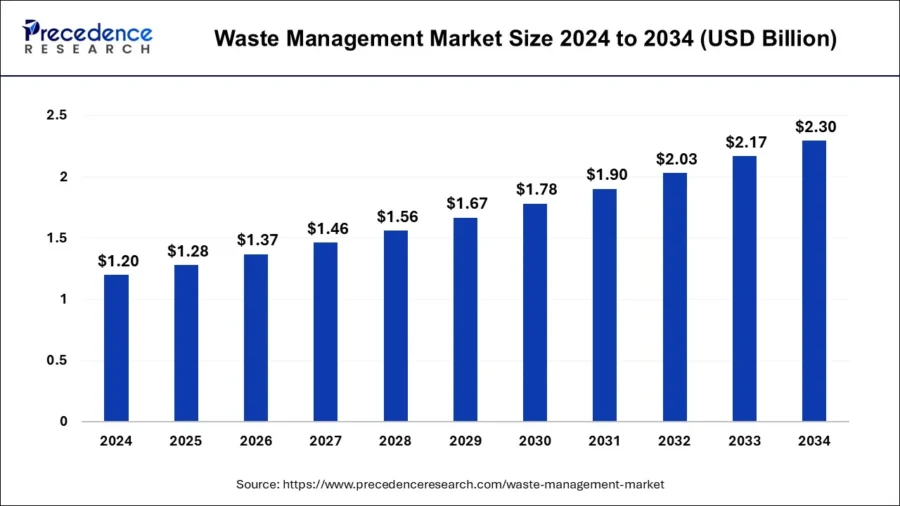
Source: Precedence Research
Upcycling offers a practical solution to growing waste challenges by converting discarded materials into valuable products. This decreases landfill waste and reduces the strain on waste management systems.
One example of upcycling in action is the Upcycling the Oceans initiative in Spain. Under this initiative, fishermen collect marine debris that would otherwise pollute the ocean, and recyclers convert this waste into high-quality yarn for fashion. This highlights how creative reuse supports both environmental and economic goals.
Textile waste upcycling repurposes discarded fabrics into new, higher-value products instead of sending them to landfills. The integration of robotics and AI-driven systems in textile waste upcycling further improves sorting and processing pipelines.
Moreover, businesses are converting food byproducts into new food ingredients. Food waste upcycling thus reduces waste and creates new revenue streams. Atomo Coffee, for example, produces beanless coffee using upcycled ingredients such as date pits and grape skin.
Agricultural waste upcycling is another solution that converts crop residues and by-products into useful materials. This includes biofuels, packaging, and building supplies. BioTek is converting unmarketable papayas in Hawaii into fish feed.
Further, the beauty industry is incorporating upcycled ingredients, like coffee grounds and fruit peels, into products. For example, Kaffe Bueno is converting waste materials into valuable components for cosmetics.
Cirtex advances Textile and Polyester Pad Upcycling
Irish startup Cirtex upcycles discarded textiles into valuable products. It processes wool, polyester fiber, and foam into thermal and acoustic insulation. These insulation products are suitable for attics, partition walls, and underfloor areas.
Additionally, the startup manufactures bedding and furniture padding, flooring and carpet underlay, and arena fiber for equestrian surfaces. Through its upcycling initiatives, Cirtex reduces textile waste, contributes to environmental sustainability, and promotes a circular economy.
NABORE enhances Thermoplastic Upcycling
German startup NABORE develops zero-waste technologies that change leather and plant residues into high-quality surface materials. It offers two primary product lines, NABORE leather-based and NABORE vegan.
The NABORE leather-based line utilizes recycled leather offcuts to create materials for fashion, furniture, and automotive interiors, while the NABORE vegan line utilizes a plant-based material to mimic the look, feel, and durability of leather.
Further, these materials are thermoplastically deformable and recyclable. They are customizable in strength, elongate behavior, and tear resistance to meet diverse application requirements.
9. Digital Product Passports
Digital product passports allow businesses to store detailed data on materials, components, and manufacturing processes. This enables them to identify recyclable parts, hazardous substances, or reusable components to improve material recovery.
DPPs also allow recyclers to understand the types of plastics, metals, and rare materials used in products. This increases the efficiency and quality of recycling by supporting proper sorting and treatment processes.
Blockchain-integrated DPPs further provide immutable records of a product’s lifecycle while ensuring data integrity and transparency. Companies like Everledger have blockchain-based DPPs to track battery origins and compositions. This ensures responsible sourcing and ethical recycling practices. The transparency also builds trust and supports the development of a sustainable, circular economy.
Additionally, IoT devices collect real-time data on product usage and condition to provide insights for maintenance and improve end-of-life management. For instance, Decathlon employs RFID to track products. This technology also offers transparency throughout its supply chain, facilitates efficient resource management, and supports circular practices by enabling better material tracking and recovery.
Decentralized identifiers (DIDs) and verifiable credentials (VCs) further provide secure, decentralized management of product identities and attributes.
Highlighting these developments, the digital product passport market is projected to grow from USD 3.23 billion in 2025 to USD 23.14 billion by 2034, exhibiting a CAGR of 24.43%.
MagVision offers a Sustainable Item-Level Tracking Technology
UK-based startup MagVision provides MagID, a proprietary technology that applies magnetic ink codes on or within the packaging. It enables cost-effective and environmentally friendly tracking throughout a product’s lifecycle.
These codes, readable through materials and resistant to wear, provide information on product origin, materials, and environmental impact.
Moreover, MagVision offers MagScan, a device to scan and record magnetic signals from documents containing hard magnetic material. Further, MagVisualizer is a device that scans, displays, and records magnetic images from documents containing magnetic material.
The startup’s verification-as-a-service platform thus provides a secure and flexible system to manage marked items. This allows businesses to run applications on their servers for security and compliance.
Circlechain builds a Waste Management Traceability Platform
French startup Circlechain offers a collaborative platform that provides end-to-end traceability for various types of waste. Its system connects businesses through specialized functional modules – TrackChantier 4.0, Dechetterie 4.0, and PilotChaine 4.0.
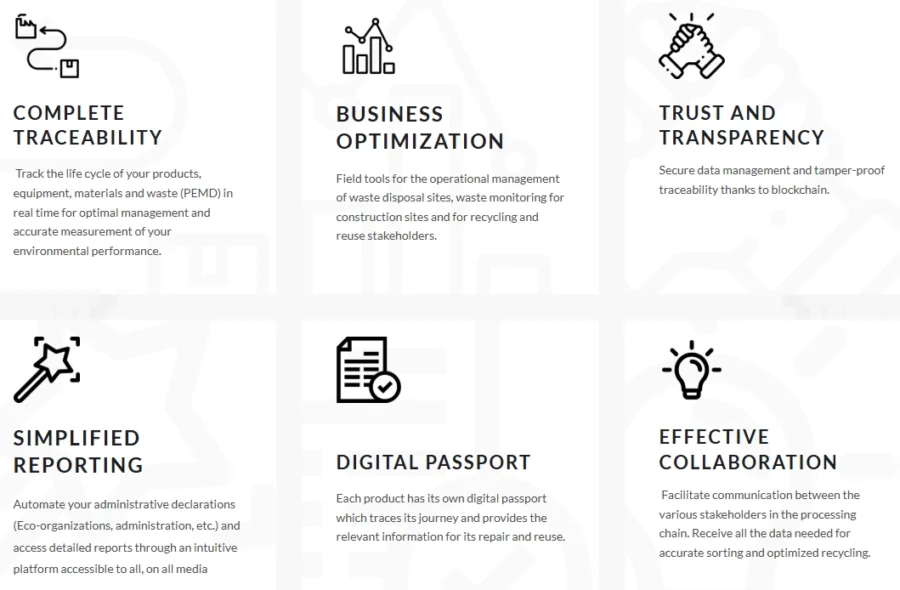
Further, Circlechain employs a private blockchain to certify and render data immutable. This ensures that all recorded information remains tamper-proof and trustworthy.
This adaptive platform features automatic contributor identification, real-time dashboards, and document automation.
10. Reusable Packaging
Each year, manufacturers produce 400 million tonnes of plastic waste – including single-use materials like plastic bags, straws, and packaging. About 36% is used for packaging. Of this, only 85% ends up in landfills or as unregulated waste.
On the other hand, reusable packaging replaces such single-use packages to reduce landfill waste and environmental pollution. As per Market Research Future, the reusable packaging industry is expected to grow from USD billion in 2025 to USD 167.64 billion by 2034.
Refillable systems also allow businesses to reuse containers by offering convenient refill stations. This reduces the need for new packaging.
Ecovative Design uses mushroom-based materials to create renewable and compostable replacements for polystyrene packaging.
Modoru builds SaaS & RFID-enabled Packaging Platform
UK-based startup Modoru tags each packaging item with durable radio-frequency identification (RFID) tags.
It installs RFID infrastructure, including scanners and portals. This setup tracks items with high speed and accuracy while maintaining operational flow.
The startup designs packaging to withstand industrial use, ensuring it remains microwavable, washable, and reusable multiple times.
Moreover, Modoru integrates the system into catering workflows with minimal disruption and scales infrastructure to maintain visibility.
It also captures and analyzes real-time data on emissions, consumer behavior, inventory, and logistics. This data supports environmental reporting, streamlines processes, and delivers cost savings.
Further, the startup reduces packaging waste at scale and allows businesses to transition from single-use systems to traceable circular models.
Topanga.io delivers a Reusable Packaging Management and Tracking Platform
US-based startup Topanga.io builds ReusePass and StreamLine for commercial kitchen operations.
ReusePass is a reusable packaging program that delivers reusable packaging with radio-frequency identification (RFID) enabled, labor-free container tracking. On the other hand, StreamLine is an AI-powered menu item recognition tool that also offers contextual waste insights.
The startup also integrates both products into existing kitchen workflows without disruption.
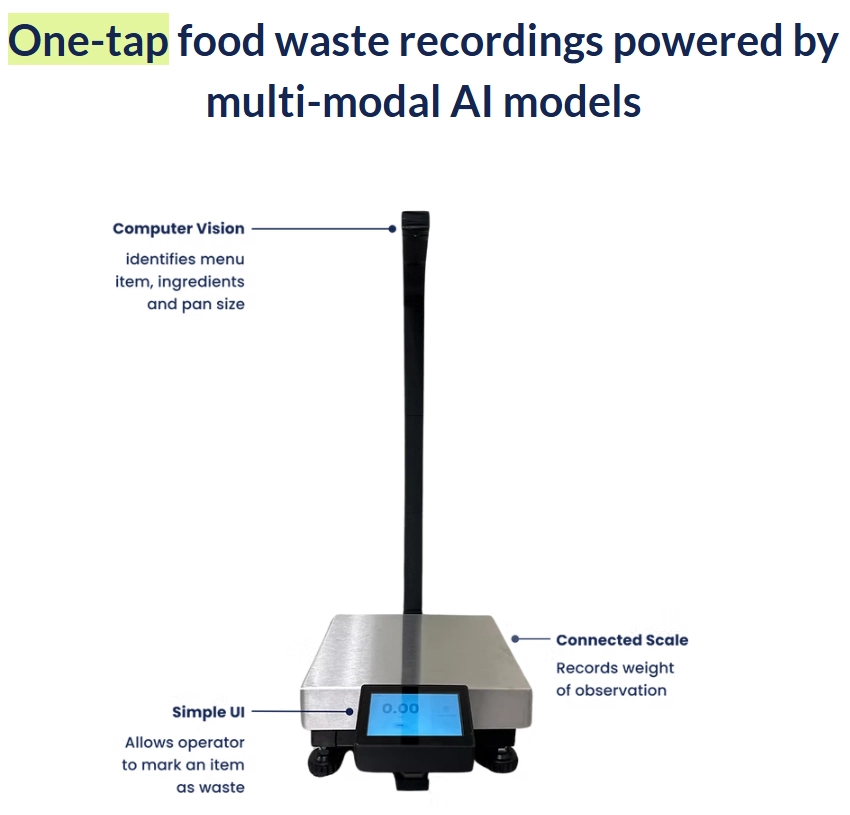
ReusePass supports packaging agnostic systems and mobile ordering platforms like Grubhub, while StreamLine automates post-production tasks and delivers weekly operational insights. Both tools provide real-time data to guide kitchen decisions.
Business operators receive actionable insights on packaging use and food waste. This way, Topanga.io allows kitchens to lower costs and eliminate unnecessary environmental impact. It also supports sustainable operations through efficient reuse and data-driven waste reduction.
Discover all Circular Economy Trends, Technologies & Startups
Circular economy is shifting from material recovery to full system redesign. Emerging trends like AI-based material flow analysis, decentralized repair networks, molecular recycling, and blockchain tracking now lead the way. Companies also increasingly adopt product-as-a-service models and autonomous reverse logistics to build smarter, closed-loop systems. The future lies in scalable infrastructure and connected ecosystems that create lasting value while minimizing waste.
The Circular Economy Trends & Startups outlined in this report only scratch the surface of trends that we identified during our data-driven innovation & startup scouting process. Identifying new opportunities & emerging technologies to implement into your business goes a long way in gaining a competitive advantage.
![Explore the Top 10 Circular Economy Trends & Innovations [2025]](https://www.startus-insights.com/wp-content/uploads/2025/03/Circular-Economy-Trends-SharedImg-StartUs-Insights-noresize-420x236.webp)

 WATCH THE VIDEO VERSION
WATCH THE VIDEO VERSION 




